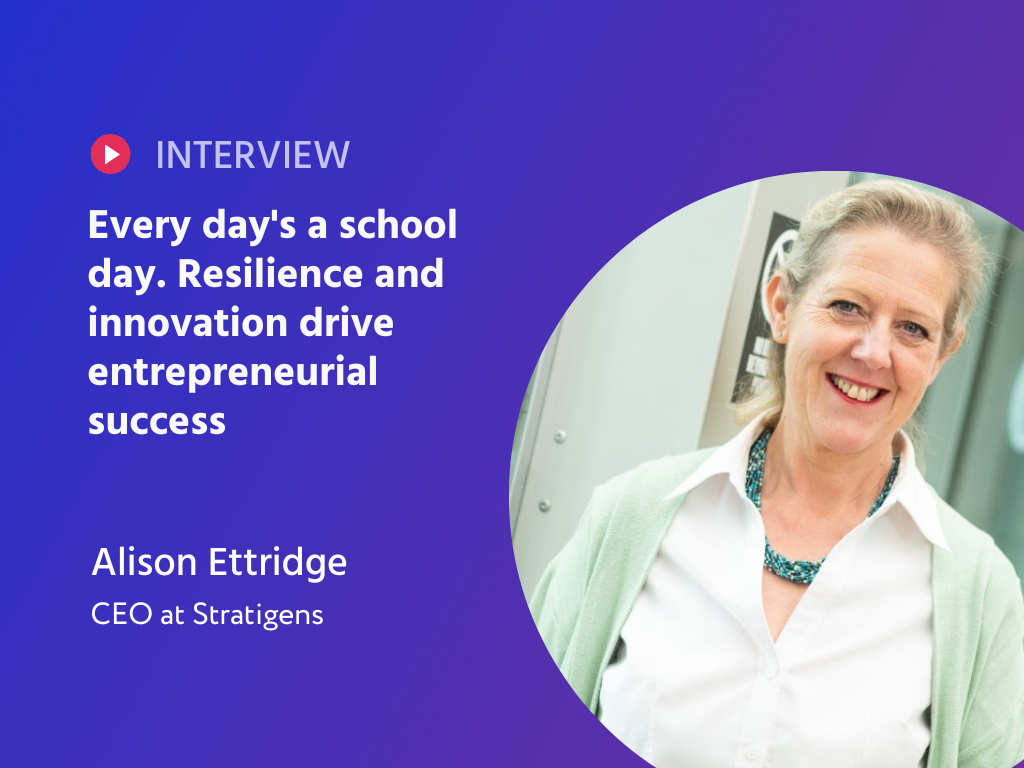Lewis Johnson, President and CEO of Alelo, is undeniably one of the leaders in combining language learning with AI, with Alelo being the company of choice for military experts and companies all over the world. Lewis has a background in languages and computer science, and much of his work includes the use of language and communication. His life and career are completely dedicated to human connection, as evidenced by his love for opera singing and conducting a choir in Los Angeles on weekends.
In this article, we will look at how Alelo is using AI to create the most prestigious and realistic methods of language learning, the challenges that come with AI; its potential and what it lacks, how it can supplement our human abilities to have better empathy, and whether we are looking at a future of Ex-machina type AI or something more akin to R2-D2.
A thing for communication
With a remarkable portfolio of over ten languages, including Chinese and some of the most difficult to master, I was intrigued to see where this passion for studying languages originates from.
“It was always something that I was interested in from a young age, and I began as a language collector.”
He told how he performed a sort of inventory not too long ago and worked out that he has worked with a couple of dozen different languages in some capacity, although not claiming to speak all of them fluently.
The future of language learning: the spark of Alelo
It began when 3D video game technology was first introduced, as Lewis and his starting team began to notice speech recognition technology starting to take off.
"I had this thought… What if you could develop an immersive 3D game in which you had to speak the language and interact with the game characters in order to progress?"
That was Lewis's first vision for integrating video games and artificial intelligence natural language technologies. Their first MVP, a prototype, was essentially an immersive game of a virtual Baghdad in which you could speak with the game's actors in Iraqi Arabic.
He describes how merging the language learning process with AI gave military personnel a near-realistic way to get individuals acquainted with Iraq's language and culture, resulting in improved results.
Learning by doing
"We learned how effective this way was to learn. It's simulating learning by doing, but it also helps you grow your self-confidence so that when you're in a real-world situation, it feels familiar, allowing you to manage it better.”
15 years later and a product which has truly taken off, needless to say, it has been proven very effective.
The idea was always originally to commercialize this technology and then make it available to a wide customer base all over the world to handle a range of different training and education concerns, all of which had something to do with communication in some way. Alelo took it a step further and started creating virtual coaching avatars.
The potential is enormous
Outsourcing but retaining the core
The Alelo team has relied on an in-house engineering staff, supplemented by consultants with specific experience, since its inception. The core team, however, remained intact.
"One difference, especially since moving to the cloud, is that we now build on and leverage cloud-based AI services. We began by developing the entire technology stack, including the AI component. It is now a combination of our own technology and what cloud-based cognitive service providers can provide."
Outsourcing gives us the best of both worlds
Cutting edge tech to supplement human flaws
By taking this approach, they can tailor their use of cutting-edge technology to their specific needs while still benefiting from advancements in other areas. Lewis describes how this challenge is divided into two parts. He tells how language learners want technology that is both easy to use and reliable.
"As a result, we must collect a large amount of data from learners worldwide, such as learners speaking English and observing the types of errors they make."
He elaborates on the fact that their technological involvement has resulted in the additional difficulty of analytics, performance metrics, proficiency, and competency being fundamental features of their product.
“In some ways, our avatars are similar to chatbots and voice technologies; however, by the end of the session, the system will have built a profile of your expertise that a generic chatbot cannot replicate.”
We are employing the attribute technologies that we lack as humans
Bearing the brunt of change
It's no secret that the market has recently experienced dramatic fluctuations, and startups must now be designed to be adaptable enough to these changes quickly.
The COVID pandemic is a prime example of this. When the pandemic struck, countries around the world closed their borders and halted all international travel. Language education was thus temporarily in short supply, and Alelo bore the brunt of the pandemic in this regard. However, as people scrambled to find new jobs, reskilling training was in high demand, and learning a language became a necessity rather than a chore.
“We altered our focus when COVID shut down the economy and people were looking for new jobs and ways to swiftly learn new skills. But the economy eventually rebounded and there was less of a desire for people looking to change careers.”
“The difficulty is to ensure that we could produce technology rather than platforms. However, demand signals shift, and they do so swiftly. As a result, we had to and continue to pivot significantly to guarantee that we reach the market's current sweet spot.”
Ex-machina expectations: A far way off?
With AI enhancing year on year, we can utilize this technology for development, and it Alelo’s ase, for reflecting real life situations. But expectations when someone says the word ‘robot’ have always been more fantasy than fiction. We wanted to know how satisfied Lewis was with the current rate of AI development.
Artificial intelligence and natural language processing has made considerable progress, but that it still has a long way to go
The technology is still nowhere near what people expect of it
Lewis tells how people's imaginations run wild as soon as you suggest that their avatar can have a conversation with them. But Lewis tells how, just as a human has a limited capacity to talk about an array of topics, so does AI.
An avatar not a robot genius
An avatar at a train ticket booth is programmed to handle all ticket-related matters, just as real-life staff would not sit there and discuss global warming with you. Every employee, like every avatar, has a certain task to complete.
“Setting the right expectations for the user has always been one of our problems. When you give people the impression that here's this avatar with whom you can communicate, they imagine that they can talk about whatever they want with this avatar.”
You can immediately see AI technology's limitations
The Alelo team addresses this by focusing all of their technologies on what are known as task-based dialogues.
Assume a railway station simulation…
“You go to the railway station to purchase a train ticket. You must go to the window and speak with the avatar, telling her where you want to go and how much you want to spend. However, that avatar is programmed to talk about railway tickets and does not understand your specific issue. Users quickly understand, though, Well, I'm here to buy a train ticket. So I'll talk to the avatar about my train ticket.”
AI as a tool of enhancing emotional intelligence?
Lewis tells how, in the early days of applying artificial intelligence to education, it was used to kind of well-structured topic areas, which is what got him interested in this whole area.
"So, for example, in mathematics, there were these early intelligent tutors who arose to assist you with your math problems. However, dealing with people is not the same as mathematics."
"But we have technology that can imitate human contact in a regulated, repeatable, and observable manner. That was where I saw a significant opportunity, and it's still an area of great interest to me.”
Lewis also told how he believes a huge focus will now be on algorithmic technology to help enhance soft skills like communication and empathy, which we think of as the most human of skills.
The AI journey? A world of I-robots or R2-D2s?
AI attempts to answer Alan Turing's question, "Can computers think?" The ambitious goal of AI has inspired several debates, but there is no commonly accepted definition of what AI is. However, with practically all data set to be digitized in the future, AI for decision-making will become optimal. Lewis tells us how his work with AI and language learning has changed over the years and where it is going…
It's been a rapid progression within specified areas and goals
“For a long time, chess playing programs were not as good as human Grandmasters, but then they surpassed them. And now that a machine can outperform any human at chess, I expect this trend to continue in other constrained domains, narrow tasks.”
General purpose intelligence or general intelligence is still a long way off
Lewis tells how recently the rise of programmed computers capable of convincingly simulating general intelligence has become evident, with people already being duped by objects that appear to be intelligent.
Give it a human-like face interaction and people assume they're interacting with a cognitive entity
The AI Achilles heel
There are many applications where presenting the appearance of human-like abilities is adequate; as long as you don't delve too deeply into what this avatar knows and believes, you're probably fine, so you have a limited sense of limitations.
The simplest things for humans can be the most complex for AI technology
“When you're driving, it's extremely easy for you to determine what's a parked car, what's a moving car, and what's a billboard, but computers still struggle to discern those distinctions, and they occasionally make mistakes. It’s technology's Achilles heel.”




